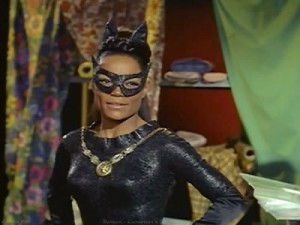Naomi Sims: Entrepreneur; Writer; Fashion Model
Naomi Sims, one of the top Black businesswomen in the United States, began her career as the first Black supermodel.
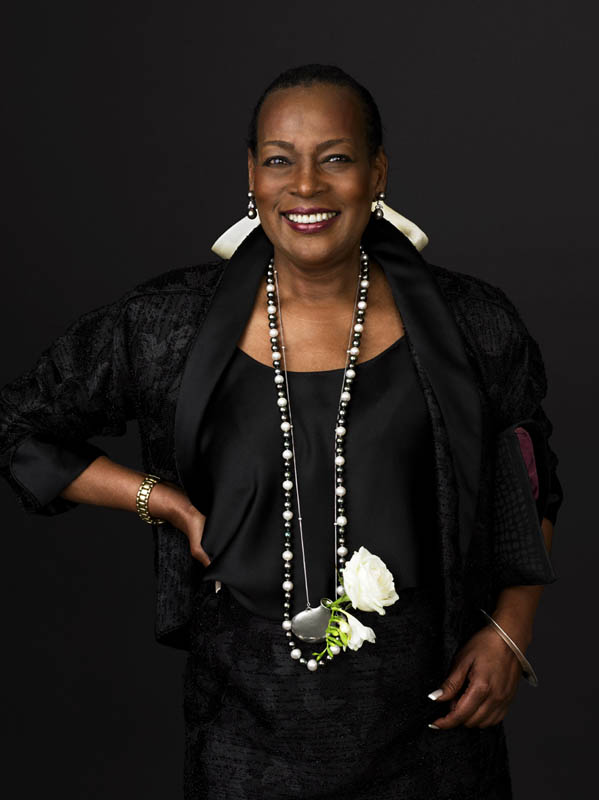

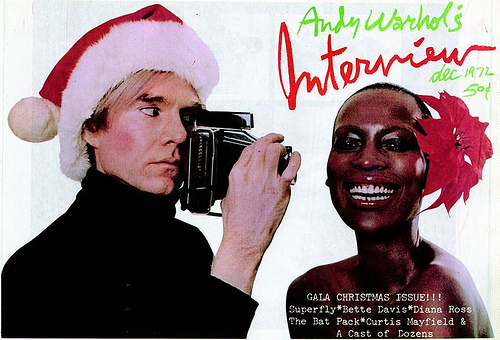 According to Essence magazine, “Never had a model so dark-skinned received so much exposure, praise, and professional prestige.” After just five years, however, Sims decided to give up modeling to start her own wig business. Sims continued to expand her business interests in the 1980s, launching her own perfume and a line of prestige cosmetics. As founder and CEO of the Naomi Sims Collection, she oversaw a multimillion-dollar range of wigs, skin care products, and cosmetics specifically designed for Black women.
According to Essence magazine, “Never had a model so dark-skinned received so much exposure, praise, and professional prestige.” After just five years, however, Sims decided to give up modeling to start her own wig business. Sims continued to expand her business interests in the 1980s, launching her own perfume and a line of prestige cosmetics. As founder and CEO of the Naomi Sims Collection, she oversaw a multimillion-dollar range of wigs, skin care products, and cosmetics specifically designed for Black women.
Naomi Sims was born on March 30, 1949, in Oxford, Mississippi. Later, she moved to Pittsburgh, Pennsylvania, where she attended Westinghouse High School. Other than that, information about Sims’s childhood is contradictory. However, all sources agree that after graduating from Westinghouse, Sims moved to New York to live with her sister Betty, a flight attendant who later also became a model. Sims had won a small scholarship to the Fashion Institute of Technology, where she studied merchandising and textile design. At the same time, she earned another small scholarship to study psychology at New York University, where she took classes in the evenings. Despite the scholarships and her sister’s help, Sims soon realized that she needed a job, and a counselor at the Fashion Institute suggested that she try modeling.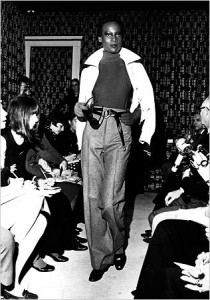 At 5’10”, with dark skin, Sims had not been considered particularly attractive as a teenager. “Black wasn’t beautiful then,” she said in Black Enterprise. “The darker your skin, the less good-looking you were considered; and I was too tall, and too skinny.” In the wake of the civil rights movement and the Black Power movement, however, the idea that only light-skinned women were attractive was being called into question.
At 5’10”, with dark skin, Sims had not been considered particularly attractive as a teenager. “Black wasn’t beautiful then,” she said in Black Enterprise. “The darker your skin, the less good-looking you were considered; and I was too tall, and too skinny.” In the wake of the civil rights movement and the Black Power movement, however, the idea that only light-skinned women were attractive was being called into question.
Still, when Sims approached modeling agencies in New York, she was told outright that there was no work for Black models. Alternatively, Sims told Mademoiselle that the agencies made “very insipid excuses–‘too many of my type’–and there were no other Black women and certainly not anybody of my type!”
Undeterred, Sims tried a different approach. She contacted a well-known fashion photographer, persuading him to meet with her; to her surprise, he agreed. Immediately spotting Sims’s potential, the photographer sent her to meet his wife, a fashion editor at the New York Times. In 1967, after her very first modeling session, Sims found herself on the cover of the Times’; Sunday magazine.
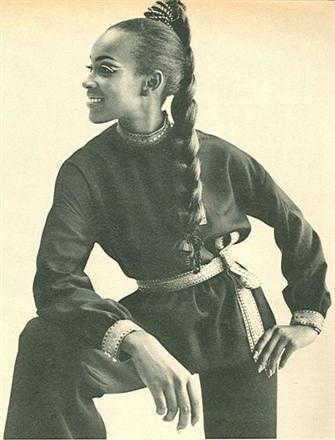 It was a huge break, but when Sims returned to the modeling agencies, she found that nothing had changed; they still insisted there was no work for Black models. Finally, she approached former top model Wilhelmina Cooper, who was just starting her own agency. A born businesswoman, Sims made Cooper an offer she could not refuse: Sims would mail out copies of the Times layout to 100 different advertising agencies, along with Cooper’s phone number. If anyone was interested, Cooper had just earned a modeling commission; if not, she had wasted no time or energy on the project. To Cooper’s amazement, the response to the mailing was immediate and overwhelming, and a few days later, Sims was officially on her books.
It was a huge break, but when Sims returned to the modeling agencies, she found that nothing had changed; they still insisted there was no work for Black models. Finally, she approached former top model Wilhelmina Cooper, who was just starting her own agency. A born businesswoman, Sims made Cooper an offer she could not refuse: Sims would mail out copies of the Times layout to 100 different advertising agencies, along with Cooper’s phone number. If anyone was interested, Cooper had just earned a modeling commission; if not, she had wasted no time or energy on the project. To Cooper’s amazement, the response to the mailing was immediate and overwhelming, and a few days later, Sims was officially on her books.
Became First Black Supermodel
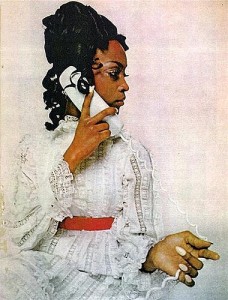 After that brief period of discouragement, Sims saw her modeling career take off at blinding speed. Within a week of joining Wilhelmina Cooper, she was hired for a national television commercial for AT&T. Later that year, she appeared on the cover of Life magazine, which ran an article about new Black models. In 1969 and 1970, she was voted top model of the year by International Mannequins. Just two years after beginning her modeling career, Sims had appeared in virtually every fashion magazine in the world.
After that brief period of discouragement, Sims saw her modeling career take off at blinding speed. Within a week of joining Wilhelmina Cooper, she was hired for a national television commercial for AT&T. Later that year, she appeared on the cover of Life magazine, which ran an article about new Black models. In 1969 and 1970, she was voted top model of the year by International Mannequins. Just two years after beginning her modeling career, Sims had appeared in virtually every fashion magazine in the world.
While Sims’s skin color was newsworthy, her walk received just as much attention. According to the Kansas City Star, “Her walk became her hallmark. It wasn’t like the glide or bounce of many models. Her serpentine movements of the arms, torso, and legs were beautiful to watch and as subtly controlled as a dancer’s.”
“When she put on a garment, something just m-a-arvelous happened,” fashion designer Halston, one of the first to hire Sims, was quoted as saying in Black Enterprise. Even Cooper, who had been slow to see Sims’s potential, was quoted in Black Enterprise: “She could make any garment–even a sackcloth–look like sensational haute couture.”
Gave Up Modeling for Business
In 1973, Sims married Michael Alistair Findlay, a Scotsman who ran an art gallery in New York; the couple later had one son, Pip. The same year, Sims decided to give up modeling, though she was just 24 and potentially had a long career in front of her. “Modeling was never my ultimate goal,” she was quoted as saying in Black Business Leaders. “I started to model to supplement my income to go to college….but the idea of starting my own business had always appealed to me, and I was fortunate that my first career led to my second.”
 Sims’s second career was a business selling wigs specifically designed for Black women. The idea came directly out of Sims’s struggle with her own hair while she was modeling, when she was under pressure to look different in every picture. “I was sort of driven to distraction in terms of how to vary my hairstyle,” she told Black Enterprise.
Sims’s second career was a business selling wigs specifically designed for Black women. The idea came directly out of Sims’s struggle with her own hair while she was modeling, when she was under pressure to look different in every picture. “I was sort of driven to distraction in terms of how to vary my hairstyle,” she told Black Enterprise.
 One easy solution would be to wear a wig, but Sims was dissatisfied with the wigs available at the time, which had smooth, straight fibers that looked nothing like Black hair. So she decided to start experimenting in her kitchen. “I got hold of a current best-selling fiber for white women, wet the fiber down, put it in my oven at a very low temperature, and baked it for maybe five or ten minutes,” she explained in Black Enterprise. The result was a curlier, coarser fiber–and a new business idea. “I thought it might be possible to market this type of product.”
One easy solution would be to wear a wig, but Sims was dissatisfied with the wigs available at the time, which had smooth, straight fibers that looked nothing like Black hair. So she decided to start experimenting in her kitchen. “I got hold of a current best-selling fiber for white women, wet the fiber down, put it in my oven at a very low temperature, and baked it for maybe five or ten minutes,” she explained in Black Enterprise. The result was a curlier, coarser fiber–and a new business idea. “I thought it might be possible to market this type of product.”
 After approaching several wig manufacturers, she finally inked a deal with Metropa Company, a small import-export firm that sold a line of wigs for Black women. The company agreed to put up some money, and make its research laboratories available to Sims. “Those were scary days in the beginning,” Sims was quoted as saying in Black Enterprise. “It had to be a fiber that wouldn’t get too frizzy, wouldn’t get too straight, and wouldn’t lose its curl.”
After approaching several wig manufacturers, she finally inked a deal with Metropa Company, a small import-export firm that sold a line of wigs for Black women. The company agreed to put up some money, and make its research laboratories available to Sims. “Those were scary days in the beginning,” Sims was quoted as saying in Black Enterprise. “It had to be a fiber that wouldn’t get too frizzy, wouldn’t get too straight, and wouldn’t lose its curl.”
Developed New Wig Fiber
 After experimenting with different techniques, the company developed a lightweight wig fiber that looked like straightened Black hair, and did not have to be set. The fiber was patented and trademarked under the name Presselle, and the first line of the Naomi Sims Collection went into production.
After experimenting with different techniques, the company developed a lightweight wig fiber that looked like straightened Black hair, and did not have to be set. The fiber was patented and trademarked under the name Presselle, and the first line of the Naomi Sims Collection went into production.
 For the first three years, Sims designed all the wig styles herself. “Basically, we duplicated the styles that were popular–what Black women in the street were wearing, and combined that with my fashion sense,” Sims told Black Enterprise. She also wrote and designed the advertisements, and traveled around the country promoting her wigs.
For the first three years, Sims designed all the wig styles herself. “Basically, we duplicated the styles that were popular–what Black women in the street were wearing, and combined that with my fashion sense,” Sims told Black Enterprise. She also wrote and designed the advertisements, and traveled around the country promoting her wigs.
 Initially, store buyers were skeptical about the need for Sims’s product, not understanding the difference between Black hair and Caucasian hair. Customers could certainly tell the difference, however: in the first year, sales of Sims’s wigs reached $5 million. By 1979, when the Naomi Sims Collection was spun off into a separate division, it was generating the majority of Metropa’s sales.
Initially, store buyers were skeptical about the need for Sims’s product, not understanding the difference between Black hair and Caucasian hair. Customers could certainly tell the difference, however: in the first year, sales of Sims’s wigs reached $5 million. By 1979, when the Naomi Sims Collection was spun off into a separate division, it was generating the majority of Metropa’s sales.
Wrote Books for Black Women
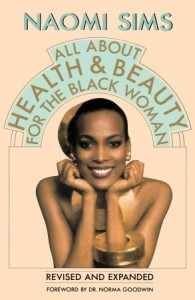 During this time, Sims also launched a career as an author. Her first book, All About Health and Beauty for the Black Woman, was published in 1976. As well as beauty tips, the book included information on nutrition, disease prevention, common health problems, fashion, and etiquette. “I had originally planned to call this book The Beautiful Black Woman, but as my thinking and reading plunged me into all areas of our Black female ethic, I soon realized that this approach was too one-dimensional,” Sims wrote in the book’s preface. The book sold well, and three years later was in its tenth printing.
During this time, Sims also launched a career as an author. Her first book, All About Health and Beauty for the Black Woman, was published in 1976. As well as beauty tips, the book included information on nutrition, disease prevention, common health problems, fashion, and etiquette. “I had originally planned to call this book The Beautiful Black Woman, but as my thinking and reading plunged me into all areas of our Black female ethic, I soon realized that this approach was too one-dimensional,” Sims wrote in the book’s preface. The book sold well, and three years later was in its tenth printing.
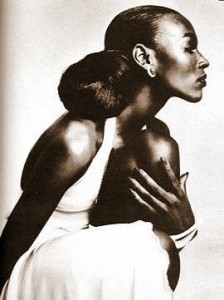 In 1979, Sims published her second book, How to Be a Top Model. Three years later, she published two more books: All About Hair Care for the Black Woman, and All About Success for the Black Woman. In All About Success, Sims was able to draw on her own experience as an entrepreneur, offering advice about landing a job, dealing with corporate politics, and juggling a career, marriage, and motherhood. In a review of the book for Black Enterprise, Phil W. Petrie wrote, “I am going to ignore the reference to gender in the title of this book and give it to my sons.”
In 1979, Sims published her second book, How to Be a Top Model. Three years later, she published two more books: All About Hair Care for the Black Woman, and All About Success for the Black Woman. In All About Success, Sims was able to draw on her own experience as an entrepreneur, offering advice about landing a job, dealing with corporate politics, and juggling a career, marriage, and motherhood. In a review of the book for Black Enterprise, Phil W. Petrie wrote, “I am going to ignore the reference to gender in the title of this book and give it to my sons.”
Launched Second Company
Meanwhile, beginning in the early 1980s, Sims gradually expanded her business interests to include perfume, skin care products, and cosmetics for Black women. Her signature fragrance, Naomi, was launched in 1981. Four years later, she founded her own company, Naomi Sims Beauty Products Ltd.
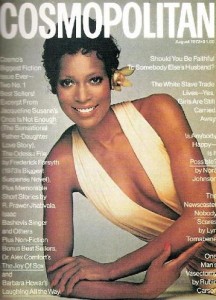 In 1987, the company introduced a line of skin-care products, with Sims as the spokesmodel. “One of the things people notice about me is the quality of my skin,” Sims told Anne-Marie Shiro of the New York Times. “We decided I was the best person to advertise my products.” Black Enterprise’s Alfred Edmond Jr. concurred, “Her look–clean, simple, and elegant–conveys sophistication, class and power.” Edmond continued, “It’s the look the company is selling–and the public is buying.” Shortly afterward, Sims added cosmetics to the mix. By 1989, Naomi Sims Beauty Products was grossing $5 million, and its products were distributed not only across the United States, but also in Africa, the Caribbean, and Canada.
In 1987, the company introduced a line of skin-care products, with Sims as the spokesmodel. “One of the things people notice about me is the quality of my skin,” Sims told Anne-Marie Shiro of the New York Times. “We decided I was the best person to advertise my products.” Black Enterprise’s Alfred Edmond Jr. concurred, “Her look–clean, simple, and elegant–conveys sophistication, class and power.” Edmond continued, “It’s the look the company is selling–and the public is buying.” Shortly afterward, Sims added cosmetics to the mix. By 1989, Naomi Sims Beauty Products was grossing $5 million, and its products were distributed not only across the United States, but also in Africa, the Caribbean, and Canada.
From the beginning, all of Sims’s products have been marketed as prestige items, at prestige prices. When Naomi Sims wigs were first introduced, they were considered expensive at $20 to $30; and when Naomi perfume was launched in 1981, it cost $100 an ounce. The pricing policy was deliberate, Sims told Black Enterprise: “When I started my business I insisted that my wigs not be put on sale… [because] it would cheapen the image. I know as a Black consumer that we will go out of our way to pursue the best products –no matter what the cost, we buy quality.”
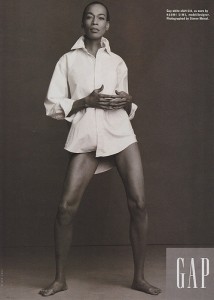 By the late 1980s, however, Sims’s firm was being challenged by larger, white-owned firms, who wanted a share of the Black cosmetics market. In 2001, the competition for the dollars of Black women remained intense; nearly all the major cosmetics companies now offer products aimed at Black women. According to an article on the website women.com, “In the past, the global beauty market was called ‘ethnic’ and was catered to by Black-owned makeup companies like…Naomi Sims. Recent competition has sounded a wake-up call for these old brands.”
By the late 1980s, however, Sims’s firm was being challenged by larger, white-owned firms, who wanted a share of the Black cosmetics market. In 2001, the competition for the dollars of Black women remained intense; nearly all the major cosmetics companies now offer products aimed at Black women. According to an article on the website women.com, “In the past, the global beauty market was called ‘ethnic’ and was catered to by Black-owned makeup companies like…Naomi Sims. Recent competition has sounded a wake-up call for these old brands.”
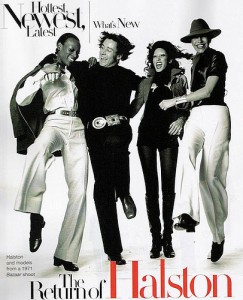 While Sims’s accomplishments as an entrepreneur are truly impressive, she has been criticized by some feminists, who accused her of making money from women’s fears about their own attractiveness. Sims brushed off these criticisms, however: “I am sure I have my share of Black female critics and enemies,” she was quoted as saying in Black Business Leaders. “It doesn’t matter. I adore women and I know I am a woman’s woman….I would be nowhere if it weren’t for Black women.”
While Sims’s accomplishments as an entrepreneur are truly impressive, she has been criticized by some feminists, who accused her of making money from women’s fears about their own attractiveness. Sims brushed off these criticisms, however: “I am sure I have my share of Black female critics and enemies,” she was quoted as saying in Black Business Leaders. “It doesn’t matter. I adore women and I know I am a woman’s woman….I would be nowhere if it weren’t for Black women.”
Naomi Sims honored at Oprah’s Legends Ball.

Career
Fashion model, 1967-73; Naomi Sims Collection, founder and CEO, 1973-; author: All About Health and Beauty for the Black Woman, 1976; How to Be a Top Model, 1979; All About Hair Care for the Black Woman, 1982; All About Success for the Black Woman, 1982; Naomi Sims Beauty Products, founder and chairman, 1985
Awards
Model of the Year Award, 1969, 1970; Women of Achievement, Ladies Home Journal, 1970; New York City Board of Education Award, 1970; Key to Cleveland, 1971; Women of Achievement, American Cancer Society, 1972; International Best Dressed List, 1971-3, 1976, 1977; Modeling Hall of Fame, International Mannequins, 1977.
Works
Selected writings
- All About Health and Beauty for the Black Woman, 1976.
- How to Be a Top Model, 1979.
- All About Hair Care for the Black Woman, 1982.
- All About Success for the Black Woman, 1982.
Further Reading
Books
- African American Business Leaders, Greenwood Press, 1994.
- All About Health and Beauty for the Black Woman, by Naomi Sims, Doubleday, 1976.
Periodicals
- Black Enterprise, March 1989, p. 42; July 1979, p. 41.
- Fortune, Nov. 9, 1987, p. 162.
- Mademoiselle, August 1974, p. 296.
- New York Times, May 15, 1987, p. A20.
Sources: Fashion Illustration, Wikipedia and Flickr




